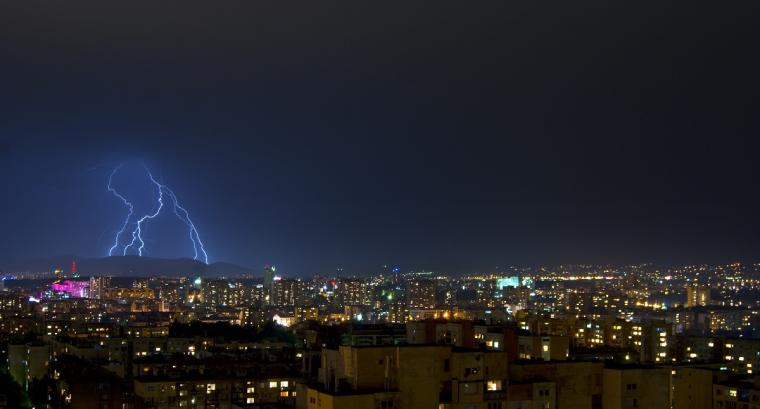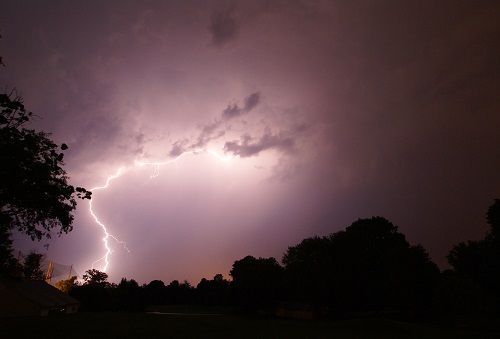

Editor’s Note: Thunderstorms (and as a result, lightning flashes) are certainly a known factor in the planning of any outdoor sports event. But we’ve come a long way since Ben Franklin sent up a kite and a key.
Lightning detection systems, designed to provide early warnings, can allow event owners to evacuate fields in advance of such weather events, potentially saving lives and putting your mind at ease as an event owner. However, the systems on the market differ – and they’re not all created equal.
Richard Kithil, President & CEO of The National Lightning Safety Institute (NLSI) provides an extensive backgrounder on the different systems. This information, which originally appeared on NLSI's website, is presented below; the original document, along with other information, can be found here.
Lightning hazards can be mitigated by advanced planning. One part of this safety program should include an early detection and warning alarm package. Lightning detectors can give notice to shut down dangerous operations before the arrival of lightning. (Note there is no defense from a "first strike" situation.) Detectors also may signal "all clear" conditions after the lightning threat has passed. Some type of detection package may help you with issues involving duty-to-warn, liability, or negligence issues.
Lightning detectors vary in complexity and cost from large, dedicated equipment packages costing in excess of $150,000 to inexpensive $20 to $30 Radio-Shack-type portable AM-FM weather radios. Network systems consisting of off-site information services are available in many places. A very good detector already exists in all our brains: Hearing thunder indicates the accompanying lightning is within your hearing range. (Thunder and lightning always happen together — acoustic and electrical signatures.) You see lightning but don’t hear thunder? That particular lightning was beyond your hearing range.
The distances from lightning Strike A to Strike B to Strike C easily can exceed more than 6-8 miles. Hear thunder? How much time is needed to get to shelter? Two to four minutes is suggested. Suspension of activities is very site-specific.
For general situations, we recommend activating your lightning defense when thunder is first heard. Immediately find shelter! We also recommend waiting to resume activities 30 minutes after the last observed lightning or thunder, even though this protocol may seem excessively conservative in many situations ("we'll never get anything done under such strict guidelines"). It is a case-by-case risk management decision. And yes, safety and productivity sometimes are incompatible. Safety, however, always should be the prevailing directive.
NLSI suggests three-stage warning criteria consistent with the recommendations contained in NFPA 780:
- 30 miles Yellow Alert — Threat is possible.
- 20 miles Orange Alert — Threat is probable.
- 10 miles Red Alert — Danger! No one allowed outside.
Available technologies of present-day lightning detectors include:
- Radio Frequency (RF) Detectors. These measure energy discharges from lightning. They can determine the approximate distance and direction of the threat. Operational frequency is important. Consider these spectrum breadths:
- WeatherBug Total Lightning Network (WTLN) — 1.0 kHz through 12 MHz
- National Lightning Detection Network (NLDN) — 1.0 kHz through 350 kHz
- United States Precision Lightning Network (USPLN) — 1.5 kHz through 400 kHz
- Lightning Detection and Ranging II (LDAR-II) — 50 MHz through 120 MHz
- New Mexico Tech (NMT) Array — 60 MHz through 78 MHz
- Surveillance et Alerte Foudre par Interferometrie Radioelectrique (SAFIR) — 109 MHz through 119 MHz
- Inferometers. These are multi-station devices, much more costly than RF detectors. They measure lightning strike data more precisely. Usually they require a skilled operator and are employed for research purposes.
- Network Systems. The WTLN, NLDN, and USPLN systems cover all the USA and Canada, and report lightning strikes to central stations and to end users. This local storm data is available by subscription. Past strike information is archived and accessible upon request.
- Electric Field Mills (EFMs). These pre-lightning pieces of equipment measure the potential gradient (voltage) changes of the earth's electric field and report changes as thresholds build to lightning breakdown values, in the range of 15 KV. Expect only a narrow (about 5-8 km) reporting range for EFMs.
- Optical Monitors. These can provide earlier warning as they detect cloud-to-cloud lightning that typically precedes cloud-to-ground lightning.
- Hybrid Designs. These monitors use a combination of the other single-technology designs, such as RF, or light or magnetic coincidental recognition. Two or more sources of information may be better than just one.
- Meteorological Subscription Services. Rent a meteorologist. Off-site professionals make the critical decisions and advise you. This method may blunt claims of negligence if something goes wrong. And some of these providers collect data sets on wind speed, rain, hail, tornado, and other weather conditions. A reliable incoming communications system is vital.
|
Lightning Detection Options - Accuracy vs. Cost vs. Complexity |
|||
|
Source of Information |
Accuracy |
Cost |
Complexity Level |
|
Hearing thunder |
Very good |
None |
Simple |
|
TV weather channel |
General info. |
None |
Simple |
|
Weather radios |
General info. |
Up to $40 ? |
Simple |
|
Hand-held detectors |
50-60% accurate |
$100 to $800 ? |
Somewhat complex |
|
Professional grade system |
90-95% accurate |
Up to $10,000 ? |
Somewhat complex |
|
Subscription service |
90-95% accurate |
Monthly fee |
Simple |
Detectors can display early warning of lightning conditions to hazardous operations. Some detectors can be relayed to start/stop standby power generators. A signaling or alarm notification method is essential to alert field personnel of developing dangerous circumstances. Two-way radios, remote-activation siren packages, strobe lights, and other methods are available.
Essential companions to any type of lightning detector include:
- A written lightning safety policy
- Designation of a primary safety person
- Determination of when to suspend activities
- Determination of safe/not safe shelters
- Notification to persons at risk
- Education — at a minimum consider posting information about lightning and your organization’s safety program
- Determination of when to resume activities.
For many situations, if you hear thunder, your (brain) detector is working fine. Since lightning and thunder always occur paired, the lightning associated with the thunder you just heard is within your hearing distance — some 6 to 8 miles. Immediately go to safe shelter. No place outside is safe!
Select the detector and/or signaling device that is site-specific to your requirements, easiest to use, and offers the most favorable cost/benefit to your operation's budget. No detector is 100% perfect.
More information on lightning safety can be found on the NLSI website.

